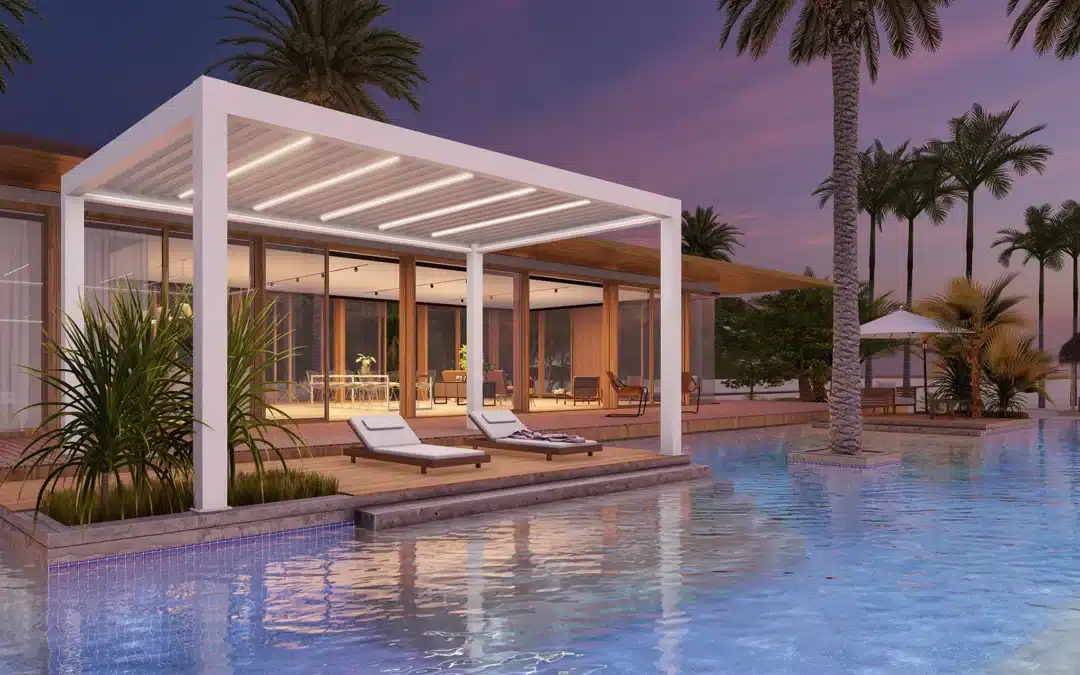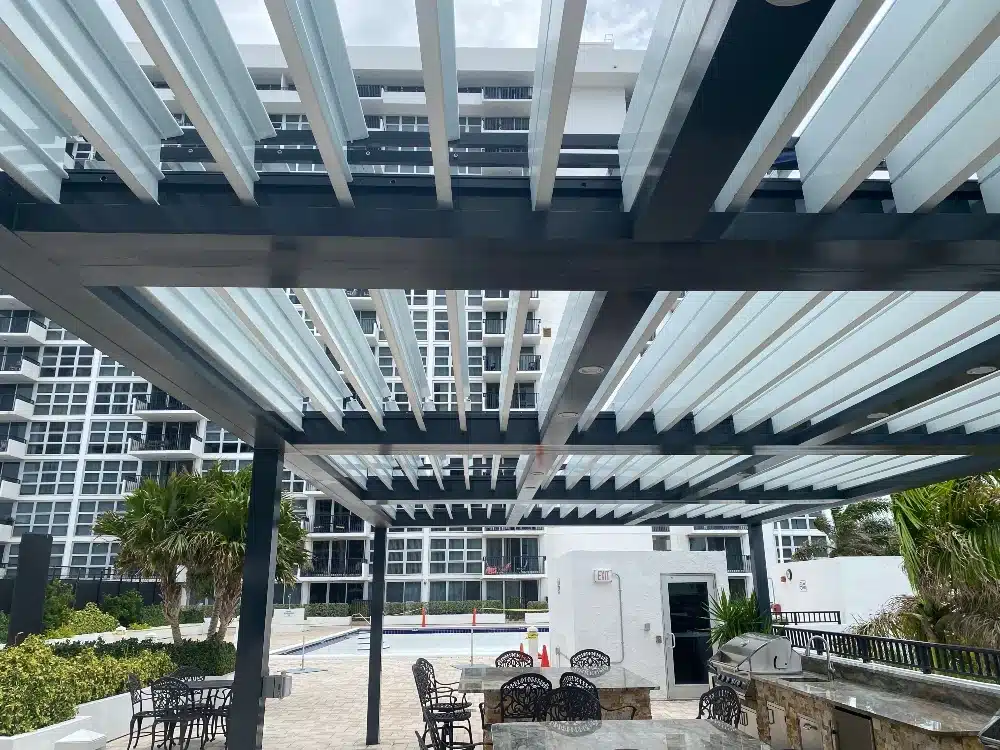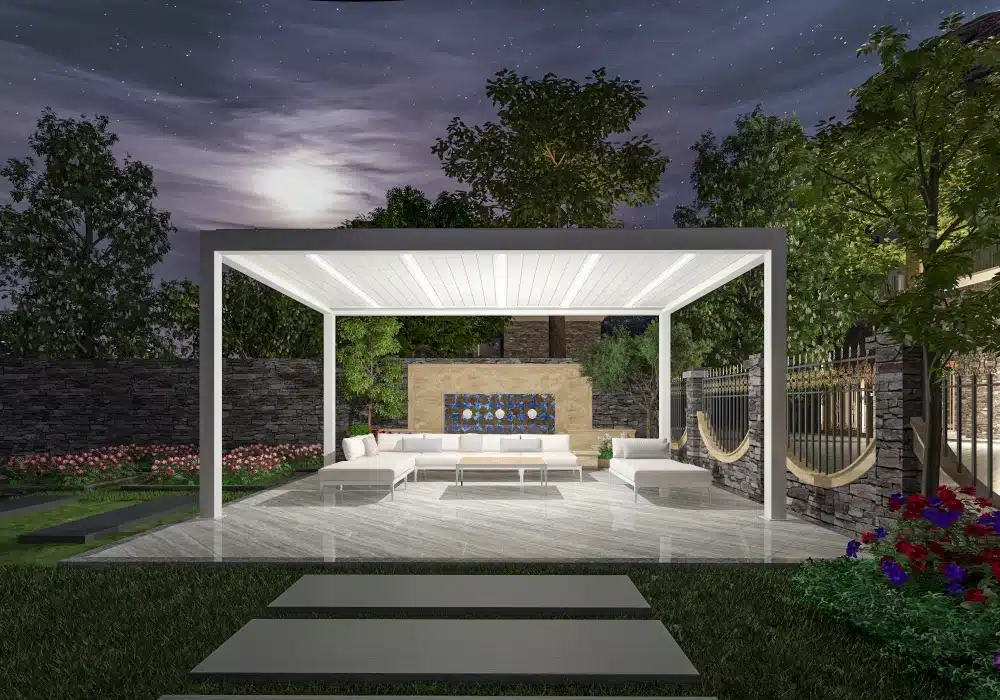When you imagine sitting under an open-air structure, embracing gentle breezes and filtered light, the concept of a free-standing pergola naturally comes to mind. A free-standing pergola affords you the freedom to position shade and structure anywhere in the yard, making a statement that blends form and purpose. In this post, we’ll explore creative design ideas for installing a free-standing pergola, inspired by the craftsmanship and aesthetic sensibility seen at enVision Pergola.
1. Embrace Geometry and Proportion
A well-designed free-standing pergola relies on thoughtful proportion. Opt for square or rectangular layouts that echo the lines of your home or pool deck. For example, matching roofline angles or aligning post spacing with existing architectural rhythms gives the pergola a feeling of cohesion. In many installations, enVision Pergola aligns spans to create balance and harmony, letting shadows fall in pleasing patterns rather than harsh intervals.
In tight yard spaces, consider a narrower span with taller posts to preserve openness while maintaining vertical interest. In larger courtyards, wider spans invite generous living zones beneath the structure.
2. Choose a Material Palette that Compliments Surroundings
To make your freestanding pergola feel integrated, select colors and materials that resonate with your property’s existing elements. enVision offers standard colors like black, white, bronze, and gray to allow custom matching to homes or landscapes.
For example:
- A white pergola against pale stone or stucco walls creates a crisp, clean impression.
- Bronze or gray works well with natural stone, wood decks, or muted siding.
- Black evokes a more striking architectural contrast, particularly near pool perimeters or modern gardens.
This approach ensures your pergola doesn’t feel tacked on, but instead seems as though it “grew” from the setting.
3. Integrate Adjustable Louvers and Lighting
One of the most dynamic design moves is pairing a freestanding pergola with motorized louvers and integrated lighting. enVision Pergola’s motorized models let you tilt blades to control sun and shade, and when closed, they channel rainwater through hidden gutters in the legs. This gives true year-round usability. Their hollow blade construction ensures that rain doesn’t drip through unwanted spots.
Nest LED strips inside louver edges to add ambient glow after dusk. The trick is to hide wiring cleanly so the look remains elegant and distraction-free. This lighting technique makes the pergola a nighttime retreat for dining, conversation, or relaxation.
4. Play with Scale and Layering
Don’t shy away from layering pergola zones in the landscape. You might build a primary pergola over a dining area and a smaller companion pergola over a lounge or fire pit. The visual interplay gives depth, guides circulation paths, and helps define zones without erecting walls.
Within a single structure, vary post thickness, beam widths, or blade spacing to alter visual weight. For instance, substantial columns anchoring the corners with slimmer mid supports maintain openness while providing a strong frame. enVision’s structural system with robust connectors allows for both strength and subtlety, even in hurricane-rated builds.
5. Combine with Natural Elements and Greenery
Soften the lines of a freestanding pergola by blending in plant life. Climbing vines, potted trees, or shade-tolerant shrubs may wrap around posts or trail along the top beams. Choose species that suit your climate and maintenance comfort level. Over time, foliage can blend with the architecture, adding a lived-in, organic dimension.
Another concept involves combining pergola shading with retractable fabric roofs or screens. This adds functional shelter without masking the structure’s framework. When the wind picks up or stronger rain comes, you can retract covers and rely on the louver system or open beams.
6. Flooring and Furniture as Design Anchors
A pergola becomes more compelling when the surface underneath reinforces the design. Use stone pavers, tile, or wood planks in patterns that echo the pergola’s geometry. For example, running floor boards parallel to beam lines strengthens visual continuity.
Furniture arrangement also matters. Center features such as a dining table, modular seating, or a fire table support posts that frame activity areas rather than block sightlines. Rugs, lighting, and outdoor accents help ground zones and make your freestanding pergola feel like a true room.
7. Maximize Views and Sightlines
Since a free-standing pergola sits separate from a structure, you have the opportunity to frame views. Place it where it captures vistas of a pool, garden bed, fountain, or skyline. Align beam openings to frame focal points rather than block them.
You can also position your pergola to shade for comfort, but leave sightlines open to major views or paths. The goal is that someone sits underneath and feels part of the greater outdoor composition, not boxed into a structure.
8. Focus on Structural Integrity for Longevity
A standout design is only meaningful when it lasts. enVision Pergola engineers their pergolas to handle up to 185 mph winds, and they offer a 12-year structural warranty. These parameters allow you to push design boundaries with confidence, knowing the structure can withstand storms or heavy weather.
Orthogonal joints, hidden fasteners, and precision connectors preserve visual purity without sacrificing strength. If you are in a climate prone to wind or storms, insisting on these structural standards gives you both beauty and peace of mind.
9. Use Color and Accent Illumination Strategically
Beyond base color, accent lighting or spotlights can highlight structural edges, post bases, or adjacent landscape features. Use warm LED tones to create contrast against cooler structural colors. In dusk hours, backlighting behind pergola posts helps make the forms feel luminous, not heavy.
You might also use uplights at planter bases or tree trunks around or inside the pergola to integrate it into the garden. The visual effect: structure and nature play off each other, softening edges and enhancing depth.
10. Blend with Architectural Style, but Make It Personal
Even though a freestanding pergola stands apart, it should relate to your home’s style. For a modern residence, keep lines sharp and minimal. For Mediterranean homes, consider warmer tones or curves in canopy edges or brackets. enVision’s design team encourages collaboration so your aesthetic preferences come through while meeting structural requirements.
Don’t feel the need to mimic exactly what’s already in place. This is an opportunity to introduce a complementary counterpoint. A pergola with a slightly bolder line or subtle contrast color can enhance rather than compete.
Designing a free-standing pergola is about balancing structure and comfort, openness and protection, and aesthetic presence with purpose. Every design decision—from post spacing, blade orientation, or lighting scheme—contributes to the user experience. With careful planning, your pergola becomes more than just overhead cover. It becomes an outdoor centerpiece.
Bring Your Outdoor Vision to Life
A freestanding pergola offers endless possibilities for creating a beautiful and inviting space right in your own backyard. With thoughtful design choices, quality craftsmanship, and attention to detail, your pergola can become the heart of your outdoor living area. Explore the options, consider your layout, and let enVision Pergola help you craft a space that’s both stylish and lasting.




